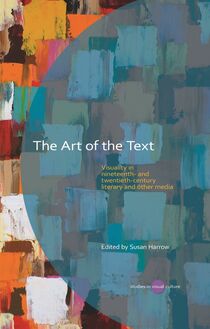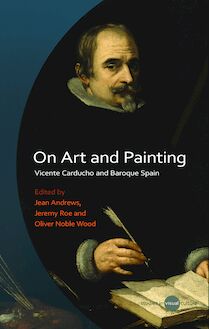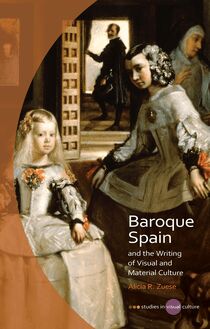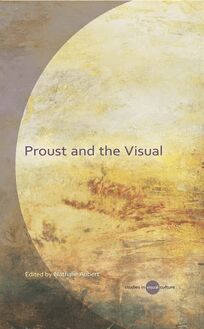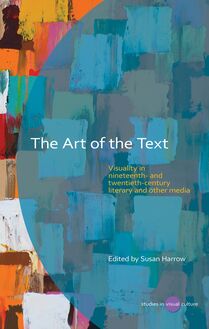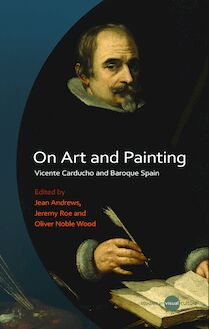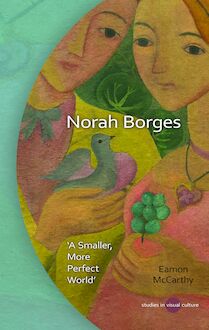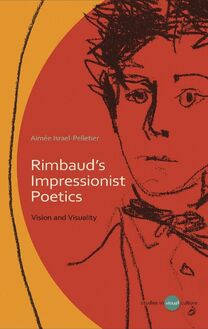Rimbaud's Impressionist Poetics , livre ebook
97
pages
English
Ebooks
2012
Vous pourrez modifier la taille du texte de cet ouvrage
Obtenez un accès à la bibliothèque pour le consulter en ligne En savoir plus
Découvre YouScribe en t'inscrivant gratuitement
Découvre YouScribe en t'inscrivant gratuitement
97
pages
English
Ebooks
2012
Vous pourrez modifier la taille du texte de cet ouvrage
Obtenez un accès à la bibliothèque pour le consulter en ligne En savoir plus
Publié par
Date de parution
15 octobre 2012
Nombre de lectures
1
EAN13
9781783163137
Langue
English
In the mid-nineteenth century, Arthur Rimbaud, the volatile genius of French poetry, invented a language that captured the energy and visual complexity of the modern world. This book explores some of the technical aspects of this language in relation to the new techniques brought forth by the Impressionist painters such as Monet, Morisot, and Pissarro.
Publié par
Date de parution
15 octobre 2012
Nombre de lectures
1
EAN13
9781783163137
Langue
English
RIMBAUD’S IMPRESSIONIST POETICS
S TUDIES IN V ISUAL C ULTURE
SERIES EDITORS
Margaret Topping
Queen’s University, Belfast
Rachael Langford
Cardiff University
Giuliana Pieri
Royal Holloway, University of London
EDITORIAL BOARD
Mieke Bal
University of Amsterdam
Paul Cooke
University of Leeds
Anne Freadman
The University of Melbourne
Andrea Noble
University of Durham
María Pilar Rodríguez
Universidad de Deusto
Eric Thau
University of Hawai’i at Manoa
S TUDIES IN V ISUAL C ULTURE
RIMBAUD’S IMPRESSIONIST POETICS
Vision and Visuality
Aimée Israel-Pelletier
© Aimée Israel-Pelletier, 2012
All rights reserved. No part of this book may be reproduced in any material form (including photocopying or storing it in any medium by electronic means and whether or not transiently or incidentally to some other use of this publication) without the written permission of the copyright owner. Applications for the copyright owner’s written permission to reproduce any part of this publication should be addressed to the University of Wales Press, 10 Columbus Walk, Brigantine Place, Cardiff CF10 4UP.
www.uwp.co.uk
British Library CIP Data
A catalogue record for this book is available from the British Library
ISBN 978-0-7083-2535-3
e-ISBN 978-1-78316-313-7
The right of Aimée Israel-Pelletier to be identified as author of this work has been asserted in accordance with sections 77 and 79 of the Copyright, Designs and Patents Act 1988.
Cover image: Pablo Picasso, Portrait of Rimbaud , lithograph, 1960. The Vera and Arturo Schwarz Collection of Dada and Surrealist Art in the Israel Museum © Succession Picasso. Photograph © The Israel Museum, Jerusalem, by Elie Posner
For Philippe A. Pelletier
Contents
Series Editors’ Preface
Acknowledgements
Note on Editions of Rimbaud’s Work
Introduction
1 Language and Visual Realism in the Poésies
2 Unsettled Terrain: Realism and Impressionism 1860s–1870s
3 Impressionism and the New Look
4 Vision, Visuality, Affect
5 After Poetry
Notes
Select Bibliography
Series Editors’ Preface
Studies in Visual Culture provides a forum for ground-breaking enquiry into visual-cultural production in its social, historical and cultural contexts. The series places particular emphasis on the exchanges, transactions and displacements that link Europe to wider global contexts across the visual-cultural field. The series seeks to promote critical engagement with visual media as ideological and cultural as well as aesthetic constructs, and foregrounds the relationship of visual cultures to other fields and discourses, including cultural history, literary production and criticism, philosophy, gender and sexuality research, journalism and media studies, migration and mobility studies, social sciences, and politics. The Studies in Visual Culture series thus focuses on exploring synergies and key debates between disciplines, concepts and theoretical approaches, and offers an exciting new arena for testing and extending disciplinary, theoretical and conceptual boundaries.
Acknowledgements
This book has been long in the making and so my thanks go back through the years. First and foremost, I would like to thank the University of Rochester for awarding me a Bridging fellowship that gave me access to the great resources of the programme for Visual and Cultural Studies. I had the good fortune to be present in 1989 and in the early 1990s when visionaries like Michael Ann Holly, Mieke Bal and Norman Bryson were establishing VCS and happily fomenting interdisciplinarity. I want to also thank Grace Seiberling who in those early years opened my eyes to the rich subject of Impressionism. The experience at VCS continues to be a source of profound scholarly satisfaction for me.
I would like to thank deans Ruth V. Gross, Beth S. Wright and Kimberly van Noort for the support they gave this project at different stages. I thank especially Ruth V. Gross for her indispensable friendship over the years. She remains my guiding light.
I wish also to acknowledge the invaluable help of the library staff of the University of Texas at Arlington, particularly the departments of Inter Library Loans and of Acquisitions. Their care manifested itself in so many ways and I am sincerely grateful to them. I also extend very warm thanks to the staff of the University of Wales Press for the support they provided this project.
My heartfelt gratitude goes to Chloé M. Pelletier. Her perfect love and many talents have cheered and sustained me during difficult times. She has taught me much about how to read visual images and has made ‘the space of painting’ a rich terrain on which I cautiously but joyfully tread. I want to also express thanks to Pauline M. Pelletier who has inspired me to do as she does – focus, forge ahead and not look back. To my remarkable mother, Pauline Israel, and to my dear late father, Saul Israel, I will always be most grateful. They are the wind at my back.
Philippe A. Pelletier has been my chief inspiration. His insights into Rimbaud and the decision Rimbaud took to ‘drop out’ of poetry have informed my readings and helped me to demystify so many aspects of the literary enterprise. His always illuminating and spot-on challenges, particularly during the final stages of writing, were important to me. To Philippe I am profoundly grateful. Without his enthusiasm, his belief in the project and his close reading of the manuscript this book would not be the immense source of pleasure it has been for me.
Note on Editions of Rimbaud’s Work
All references to Rimbaud’s work throughout this book, unless otherwise noted, are placed in parentheses in the text and are from the edition Œuvres complètes , édition établie par André Guyaux (Paris: Éditions Gallimard, 2009). The recommended English translation of Rimbaud’s works is Rimbaud: Complete Works, Selected Letters, a Bilingual Edition , translated by Wallace Fowlie, revised and edited by Seth Whidden (Chicago: The University of Chicago Press, 2005).
I wanted to recover in my literary criticism a confident conviction of reality, without giving up the power of literature to sidestep or evade the quotidian and without giving up a minimally sophisticated understanding that any text depends upon the absence of the bodies and voices that it represents. I wanted the touch of the real in the way that in an earlier period people wanted the touch of the transcendent.
Stephen Greenblatt , ‘The Touch of the Real’
C’est une raison, en vérité, toute simple; et qui est que poésie et poème ne sont nullement la même chose; et que, si la poésie peut, en surgissant dans des mots, transcender effectivement une situation historique, le poème, lui, qui est le lieu où cette épiphanie se produit parfois, mais tout aussitôt se perd, demeure au plan de ces circonstances, et reste donc déterminé, très en profondeur, par les catégories de pensée, les valeurs, les formes de la culture du moment où son auteur l’a écrit.
Yves Bonnefoy , ‘L’Histoire et l’invention littéraire’
Introduction
Rimbaud’s poetry is intensely visual. It is other things as well. It has movement and momentum; it carries meaning, expresses a range of emotion. In mood and attitude it is often flamboyant and just as often remarkably quiet and subtle. Yet, whatever we might say about it, a poem’s visual qualities always command attention. Vision is the structuring trope that most insistently communicates the poet’s sensibility and his approach to the world. Rimbaud exhibits a sensibility so tuned in to the visual that all but a few poems privilege images at the expense of words. What I mean is that Rimbaud generally calls attention to language’s ability to convey striking images over and above its discursive function. I draw the artificial distinction between words and images to facilitate the discussion of this privileging and not because I believe that Rimbaud has managed to tease word and image apart. A verbal image is an exploration of the figurative function of language and not an icon. Words and images have been interacting for a long time. Their ongoing dialogue is inescapable and it is desirable. 1
In this book I consider most specifically the way vision and visuality play out in Rimbaud’s work and argue for aligning Rimbaud with the aesthetic practice of the Impressionists. I see Rimbaud’s work and Impressionism as modes of cultural expression that emerge at a particularly turbulent time in France’s history. I use the terms vision and visuality to refer to ways of apprehending the world. I understand vision as the sense of sight, the physical operations of looking. I conceive visuality as a culturally and historically determined discourse that takes into consideration the sense of sight as well as all the other senses. I maintain that in terms of aesthetics and ideology Rimbaud’s work constitutes a literary counterpart to the Impressionist avant-garde’s attempt to make the work of art responsive to modern life and that he does so by creating a new style whose grammar has been exemplified in art criticism’s discussions of Impressionist painting both in Rimbaud’s time and ours. Rimbaud wrote at a time when Impressionism in art and discussions around it were popular and widely shared in Parisian newspapers as well as in literary and artistic circles. He also wrote at a time when the act of looking was a central preoccupation of modernity and when vision was being deployed in new ways to organize knowledge and consciousness. The diorama, kaleidoscope, stereoscope, camera and other ocular devices fuelled popular imagination in the nineteenth century and capitalized on the modern fascination with acts of looking. This fascination radically altered the way writers and painters were to represent reality. It changed the way they handled point of view and how they understood notions like subjectivity and objectivity.
W. J. T. Mitchell and Thomas Gunning have argued that when
